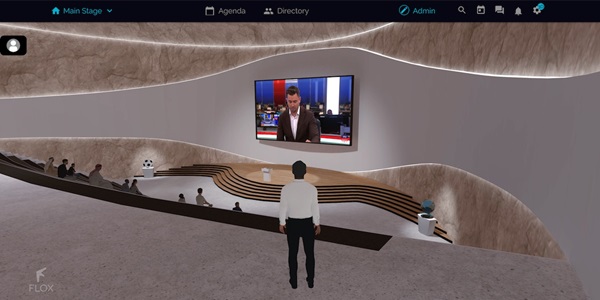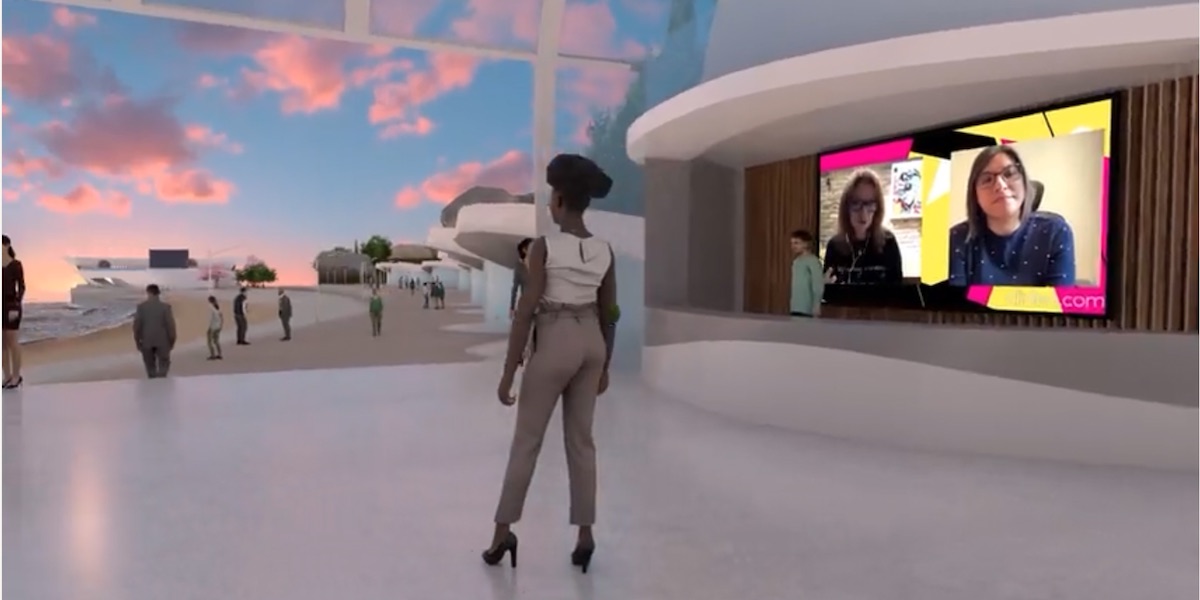Event managers have experienced two main lightbulb moments in 2022: that in-person events will continue to have a place and that virtual moments will play an increasing part in business life. In fact, Kaltura’s The State of Virtual Events 2022 report reveals that 90% of event organizers say all large-scale events will be hybrid or virtual in two years.
The advent of 3-D metaverse technology has provided better options to attend events digitally and to better engage with and capture content, while offering event managers the opportunity to build more diverse audiences and meet their ESG objectives. It’s the business value of virtual events that is prompting business leaders to re-evaluate their models for meetings, conferences and events. Metaverse virtual events can offer more immersive digital experiences at a fraction of the cost, approximately 85% less than in-person events.
Any organization that puts on a live event or experience now wants connection and collaboration that comes with social interaction, but also the digital sharing, recording and analysis their organization needs. As organizations start to explore the models for events and the potential of metaverse 3-D virtual events, a perfect blend of both—hybrid events—are becoming a popular solution. Many event managers are choosing not to return to the way things were, instead consciously considering the impact of business travel and the opportunities of digital—and plan to embrace tech as part of their events.
The evolution in events
With the limitations of 2-D virtual conferences causing digital-meeting fatigue, metaverse 3D virtual interactions can be a more accessible, inclusive and sustainable counterpart to the traditional in-person format. In fact, LinkedIn research into virtual events highlights that 79% of event organizers say virtual provided opportunities they wouldn’t have had before and 66% say they provided a greater ROI than physical.
Hybrid events can take many forms, for instance a conference seminar, workshop or other meeting that combines a live in-person event with a virtual online element. This might mean building a digital twin of corporate or educational HQs, where organizations can host in-person events with content delivered through the technology platform to a real screen, in front of an embodied audience. Or, alternatively, the reverse, using a live feed from an in-person audience to relay content to an expanded real-time or catch-up audience connecting remotely.
Building deeper social connections and continuing the conversation with audiences is also important. And this is where hybrid events are the obvious next stage for digital-first businesses. Effective use of a metaverse virtual event could be to harness the global marketing team or supplier network, to host a sustainability summit, launch a new product to international audiences or to simultaneously train large numbers of executives to ensure compliance. The flexibility of virtual meetings empowers event managers to easily adapt the frequency of engagement with key audiences to become a more globally connected business.
As technology becomes central to events, we’re likely to see a new generation of digital native events management roles that take a virtual and hybrid approach to their wider marketing strategy. They’ll focus more on what happens to the audience between events, and how it has relevance after the event, as well as, most notably, measuring the event's success.

How virtual and hybrid events contribute to green goals
Not least, the measurement of sustainability is becoming critical for event leaders, with the United Nations requesting global companies to report on the environmental impact of their events. Holding a virtual event can deliver significant carbon savings as part of corporate “net zero” strategies. The carbon footprint goes way beyond participant travel, and virtual and hybrid conferences are often greener alternatives when considering food, accommodation, preparation, execution, information and communication technology and transportation. With 1.5 billion people attending events annually in person, the savings of a global shift to full virtual would be quite a calculation.
A recent Cornell University study found that switching from in-person to virtual and hybrid conferencing has significant emissions reduction benefits—moving to virtual can reduce the carbon footprint by 94%, and for hybrid, by 67% (while maintaining more than 50% in-person attendance). Metaverse virtual events platform, such as Flox, can offer a carbon calculator to calculate the approximate carbon saving of attending virtually versus an in-person event. A recent virtual event of 3,000 attendees made an overall saving of 338 metric tons of CO2 over those same attendees attending physically.
Benefits of hybrid events
Beyond the cost and sustainability benefits, hybrid events can deliver the best of both worlds to participants. A virtual event can prioritize attendee experience, ensuring that we support as many opportunities for involvement and participation as possible by creating forums for Q&As, supporting live-chat and building in a lot of user freedom with a wide range of virtual journeys.
By using a metaverse virtual events platform that’s fully integrated into your marketing, this ensures that visitors to an event will get a unique, customized and immersive event that reflects the culture and values of the organization. The diversity and inclusion benefits of hybrid events cannot be overstated. With a metaverse event, anyone with an internet connection can attend. The platform provides organizers with a way to create space at the table for a far more diverse mix of attendees than could be accommodated in real life. The benefits of flexibility and scalability offered by metaverse events means that up to 100,000 participants can join virtually, accessing content at their convenience and with the option to return to the virtual event at a later date.
Whilst harnessing technology to reach a greater, more diverse audience, there’s also the added benefit of granular analytics on participant engagement. This includes being able to capture visitors’ behavioral data, logging information on which events or breakouts they engage with, how long they stay in sessions and who they interact with during their time on the platform. You can see exactly what they clicked, and how they voted in online polls. Once crunched, this data provides ample opportunity for follow-up discussions, micro events and the sharing of relevant content to capture prospects in your sales funnel and drive further action.
Choice is the future for events
The rapid expansion of the global event industry over the last few decades has put serious pressure on goals to mitigate global climate change. In addition, the economic pressures have made cost a major factor in event planning. When combined with the business demand to realize more immersive virtual experiences, the virtual events market is set to soar. With a global virtual events market CAGR predicted of 21.4% from 2022-2030, full virtual and hybrid events are enjoying similar success across industries.
With the arrival of metaverse virtual events, event managers now have more options to design meetings and conferences that are most effective for their teams and organizations and a virtual-physical hybrid model is set to become the model of choice for events moving forwards. Communicating more effectively, more frequently, and with larger audiences is the future for events, and organizations will be weighing up the advantages in terms of costs, carbon, inclusivity and boundless creativity - before going back to the way things were.







